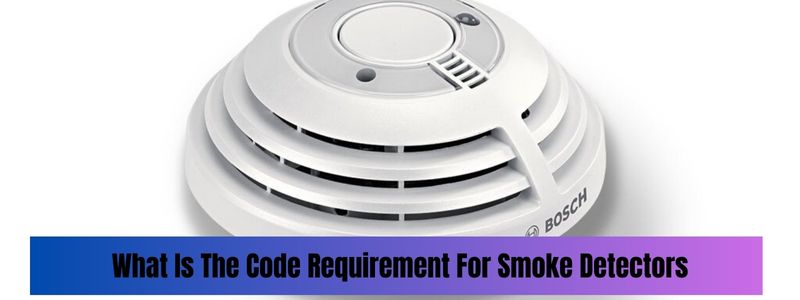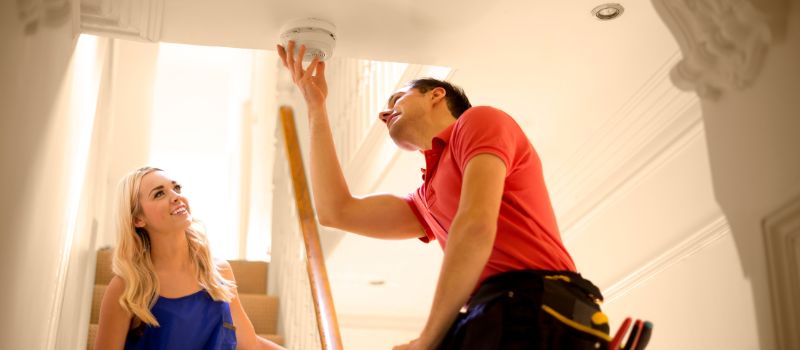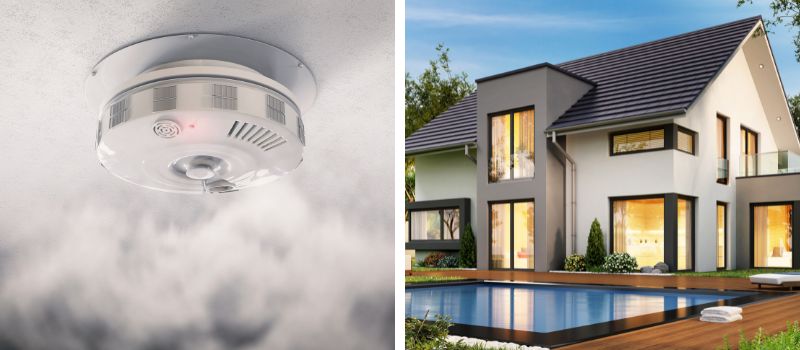Fire safety is a critical concern for buildings of all types and sizes. While smoke detectors are commonly used to detect fires, heat detectors can also play an important role in early fire detection. But how do you determine the appropriate spacing for heat detectors?
In this guide, we’ll cover the basics of heat detector spacing, including the factors that affect spacing and best practices for ensuring accurate and effective fire detection.
How do you calculate heat detector spacing?
Heat detectors must be installed within a distance of half the listed spacing, measured at right angles from all walls or partitions that extend upward to within the top 15 percent of the ceiling height. If the heat detector is installed on the ceiling, it should be at least 4 inches away from side walls.
Factors Affecting Heat Detector Spacing:
There are several factors that can impact the spacing of heat detectors in a building. These include:
- Room Size and Shape: The size and shape of the room can also impact heat detector spacing. Larger rooms may require more detectors, while irregularly shaped rooms may require additional detectors to ensure coverage of all areas.
- Type of Ceiling: The type of ceiling can impact heat detector spacing as well. For example, a suspended ceiling may require additional detectors to ensure proper coverage.
- Airflow: Airflow can impact heat detector performance, as it can cause heat to dissipate or be redirected. Areas with high airflow may require additional detectors to ensure proper coverage.
Calculating Heat Detector Spacing:
To determine the appropriate spacing for heat detectors, you’ll need to consider the factors listed above and use a formula to calculate the distance between detectors. Here’s how it works:
Determine the room height in feet.
Divide the room height by 20. This will give you the maximum allowable distance between detectors in feet.
Multiply the maximum allowable distance by 1.5. This will give you the recommended distance between detectors in feet.
For example, if the room height is 12 feet, the maximum allowable distance between detectors would be 0.6 feet (12 feet divided by 20). Multiplying this by 1.5 gives a recommended distance of 0.9 feet between detectors.
Best Practices for Heat Detector Spacing:
In addition to calculating the appropriate spacing for heat detectors, there are several best practices you should follow to ensure accurate and effective fire detection. These include:
- Follow Local Regulations: Different jurisdictions may have different requirements for heat detector spacing. Be sure to follow local regulations and codes when designing your fire detection system.
- Consider Redundancy: In some cases, it may be appropriate to include multiple heat detectors in the same area to ensure redundancy and prevent false alarms.
- Test Regularly: Heat detectors should be tested regularly to ensure proper function. Be sure to follow manufacturer recommendations for testing and maintenance.
- Consult with Experts: When in doubt, consult with fire safety professionals who have experience designing and installing fire detection systems. They can help ensure that your system meets local regulations and best practices for fire safety.
FAQ
What is the purpose of calculating heat detector spacing?
The purpose of calculating heat detector spacing is to ensure that there are enough detectors installed in a building to detect heat in case of a fire, while also minimizing the risk of false alarms.
How do you determine the listed spacing for heat detectors?
The listed spacing for heat detectors is determined by the manufacturer and can be found in the detector’s installation manual or datasheet. It is important to follow the manufacturer’s guidelines when calculating heat detector spacing.
What is the difference between heat detector spacing and smoke detector spacing?
Heat detector spacing is typically wider than smoke detector spacing because heat detectors are designed to detect heat, which rises and spreads differently than smoke. Smoke detectors are generally installed closer together to detect smoke particles more quickly.
What factors should be considered when calculating heat detector spacing?
Several factors should be considered when calculating heat detector spacing, including the type of detector being used, the size and layout of the building, the presence of obstructions that may affect heat flow, and the building’s intended use.
Is it possible to install too many heat detectors in a building?
While it is important to install enough heat detectors to adequately cover a building, it is possible to install too many detectors. This can result in higher installation and maintenance costs, as well as increased false alarms. It is important to follow the manufacturer’s guidelines when determining the appropriate number of detectors to install.
Conclusion:
Heat detectors can be an important component of a comprehensive fire detection system. By considering the factors that impact heat detector spacing and following best practices for installation and testing, you can ensure that your fire detection system is accurate and effective. Remember to always follow local regulations and consult with experts when designing and installing fire detection systems.
Read more:
- Can You Mount A Heat Detector On A Wall?
- What Is The Coverage Area Of Heat Detector As Per NFPA?
- What Is The Maximum Distance Between Heat Detectors?
- Where Should Heat Detector Be Located?

Edward’s expertise in smoke detectors is particularly noteworthy. He has conducted extensive research on the latest advancements in smoke detector technology and has worked closely with manufacturers to develop cutting-edge products that can detect fires more accurately and quickly.




